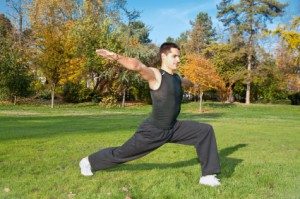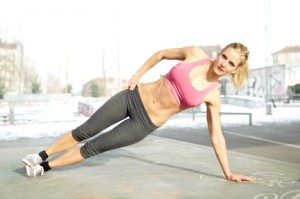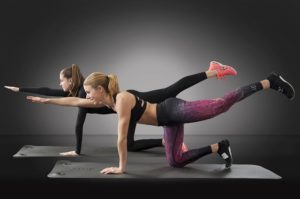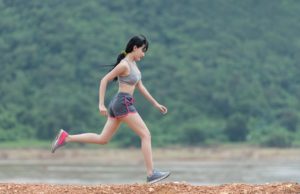Do you wear compression garments for exercise or to help with weight loss?
Compression garments are those made of snappy, stretchy, shape-holding fabrics like Spandex, nylon, lycra, and neoprene. They’re tight and yet comfortable when they fit right, and they’re warm because they don’t “breathe,” usually, having synthetic rubbery components to the fiber. Because they’re both snug and retain their shape, they provide great support to different areas of your body.
Compression wear is often recommended for exercise, and to support certain body areas. People who are fit often like to wear them while working out; heavy or obese people also get benefits from this type of garment, since it provides support and can prevent chafing if it fits well and is worn correctly.
The reasons compression garments are worn can be summarized as these, in general:
1. For support, warmth for muscles, and enhanced workouts targeting body areas addressed by the compression belt or garment.
2. For support of drooping belly, for back support, during exercise or at rest; and to have a smoother, slimmer outline.
3. To promote post-surgical healing when prescribed by a physician.
4. To prevent or lessen swelling in extremites, and to prevent development — or worsening — of varicose veins.
Some people claim that compression wear makes muscles work better and shortens reaction time. This hasn’t been shown scientifically. In fact it may slow you down if it takes more effort to lift your arm or leg, etc. There is, however, a psychological/physical component to wearing compression clothes, just as there is a profound effect on dogs wearing swaddling wraps meant to help them tolerate thunderstorms! The “grip” the clothing has on you may be comforting, or can at least put you in a very different state of mind from the one you were in just before donning your stretchy outfit. It can make you feel sleek and slim and ready to move. As all athletes are aware, mentally preparing yourself for a workout is an important, beneficial part of it.
What do you see in the stores, or online?
Support girdles, compression stockings, pants of different length from panties to capris to full-leg pants, waist cinchers, body suits — these are some of the items for compression you’ll find.
Some may be called “First Stage” or “Second Stage” garments and these are meant for post-surgical patients who have had liposuction or other surgery which requires compression afterwards to help healing and to reshape the body. If you haven’t had surgery, you probably shouldn’t wear these — at least not the First Stage garments, which are very, very tight and recommended only for medical use.
But those of us with body areas we’d like some support for as we exercise & lose weight can benefit by wearing appropriately chosen shapewear. For instance, an overweight person’s belly area frequently develops what is called an “apron,” or hanging area of fat and skin that droops over your bikini or belt line. As you lose weight, this area could use support so it has a better chance of shrinking with the rest of you. With a large weight loss, it is hard to avoid having a lot of extra skin there, but the sooner you begin to support it, the better.
Men wear compression garments as well. There are upper body shapers that help compress the abdomen, and help correct one’s posture. The “Belly Buster” is an item made by Underworks that covers the entire waist, hips and upper thighs. It of course is looser in the groin area. There are undershirts too, with special abdominal compression built in, or knitted in, that make for a slimmer look and give support to the midsection.
People with very large abdomens might need to find a special order waist wrap (and it is not unthinkable for man or woman to get a pregnancy belt for underbelly support, if it helps you). Some might, however, find that all they need is an athletic waist workout wrap such as those made by Gold’s Gym or Altus. Each of these would give varying degrees of back support as well as compression all around.
What you don’t want to do is strangle yourself at the waistline, or cut off your circulation. That can be harmful. Generally, you should take off your shapewear after you’re finished cooling down from exercise, or you’ve been wearing it about 2 hours (if it’s a less-constricting item like the undershirt, you can wear it longer if it’s still comfortable), or when it feels simply too constricting. Take it off! Your body has to breathe, and your blood needs to flow, so do not think of obstructing that!
***I do not recommend wearing constricting garments EVER for all day or all night, unless a doctor tells you to. And no one with diabetes should wear them, unless their physician advises them to. ***
Bally’s, the brand made for the personal gyms, has a selection of arm and leg slimmers.They are stretchy pieces of thick fabric — usually neoprene — that wrap around your arm or leg and close with velcro. These are belts made for workouts.
You’ve probably seen waist cinchers advertised on TV. At least one company claims that wearing their item for as little as 10 minutes twice a day will flatten your tummy dramatically, and turn your belly into a fat-burning zone each time you use it.
I take that with a grain of salt. However — athletes do wear compression garments during workouts and sports, because they offer benefits such as warming up your muscles faster. In addition, some exercises may be easier in a fully elasticized garment, which has support and springiness. But not all exercise is helped by wearing them — if you’re doing cardio, you might feel more comfortable, and have an easier time exercising in loose clothing instead.
You be the judge: You can generally tell if the garment is good for you by the way it feels. If you can move comfortably and easily in it, or you feel like your back or your abdomen is well supported but NOT squashed or pinched, then it’s a good fit.
Because — whether it’s heavyweight or lightweight fabric — compression clothes are almost always unbreathable, you should not leave them on for long after a hot, perspiring workout. Spandex, neoprene and elastic are wonderful materials, but can promote rashes and fungal infections in any area of your body that retains dampness. In other words, in your folds.
Some top brands of compression garments are: Spanx, Squeem, Nancy Ganz, Maidenform, Underworks, Insta Slim, Flexees, Bali, Dr. Ray Shapewear, Gold’s Gym, Altus, AlphaBrace





